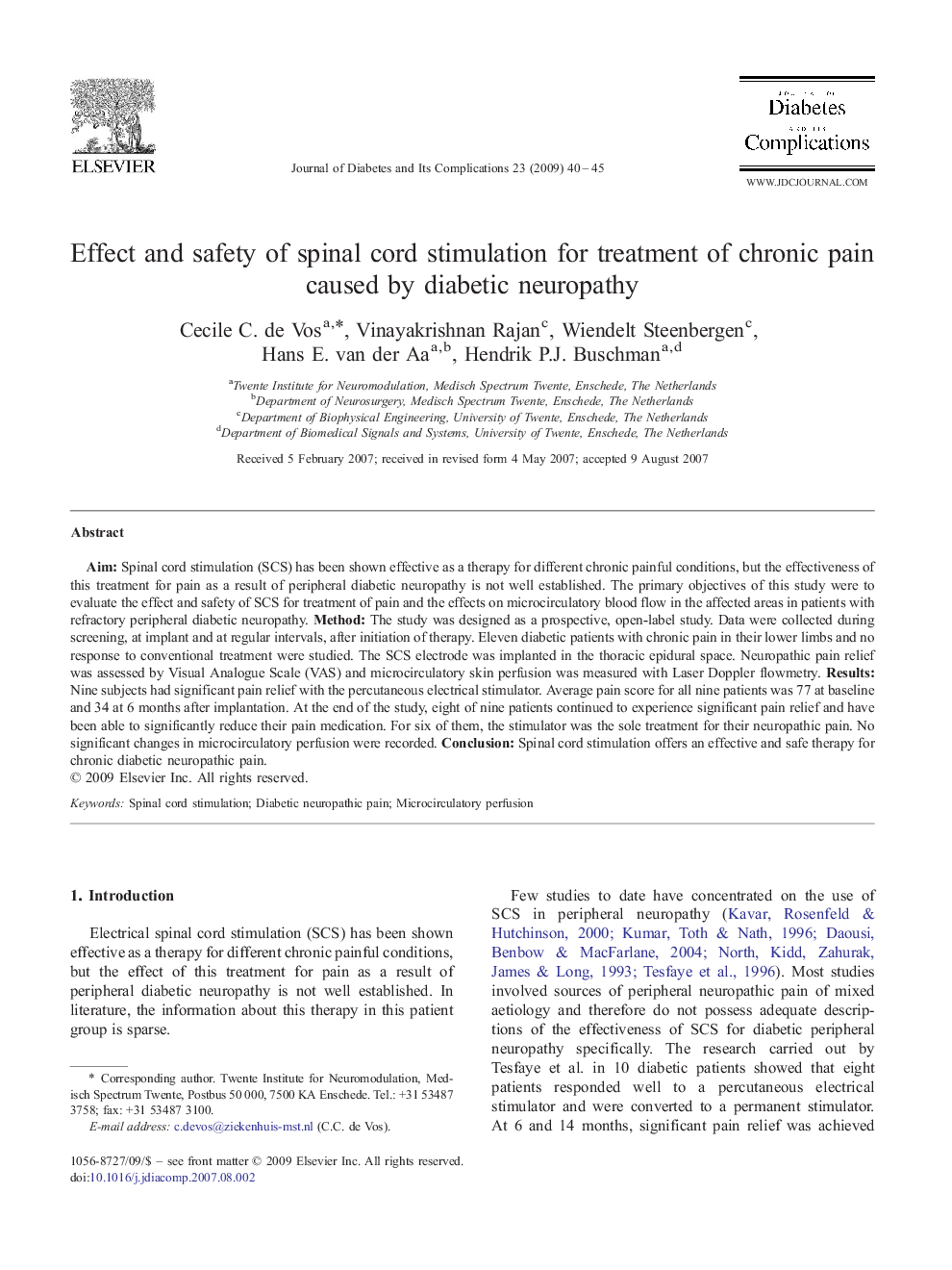| Article ID | Journal | Published Year | Pages | File Type |
|---|---|---|---|---|
| 2804693 | Journal of Diabetes and its Complications | 2009 | 6 Pages |
AimSpinal cord stimulation (SCS) has been shown effective as a therapy for different chronic painful conditions, but the effectiveness of this treatment for pain as a result of peripheral diabetic neuropathy is not well established. The primary objectives of this study were to evaluate the effect and safety of SCS for treatment of pain and the effects on microcirculatory blood flow in the affected areas in patients with refractory peripheral diabetic neuropathy.MethodThe study was designed as a prospective, open-label study. Data were collected during screening, at implant and at regular intervals, after initiation of therapy. Eleven diabetic patients with chronic pain in their lower limbs and no response to conventional treatment were studied. The SCS electrode was implanted in the thoracic epidural space. Neuropathic pain relief was assessed by Visual Analogue Scale (VAS) and microcirculatory skin perfusion was measured with Laser Doppler flowmetry.ResultsNine subjects had significant pain relief with the percutaneous electrical stimulator. Average pain score for all nine patients was 77 at baseline and 34 at 6 months after implantation. At the end of the study, eight of nine patients continued to experience significant pain relief and have been able to significantly reduce their pain medication. For six of them, the stimulator was the sole treatment for their neuropathic pain. No significant changes in microcirculatory perfusion were recorded.ConclusionSpinal cord stimulation offers an effective and safe therapy for chronic diabetic neuropathic pain.
